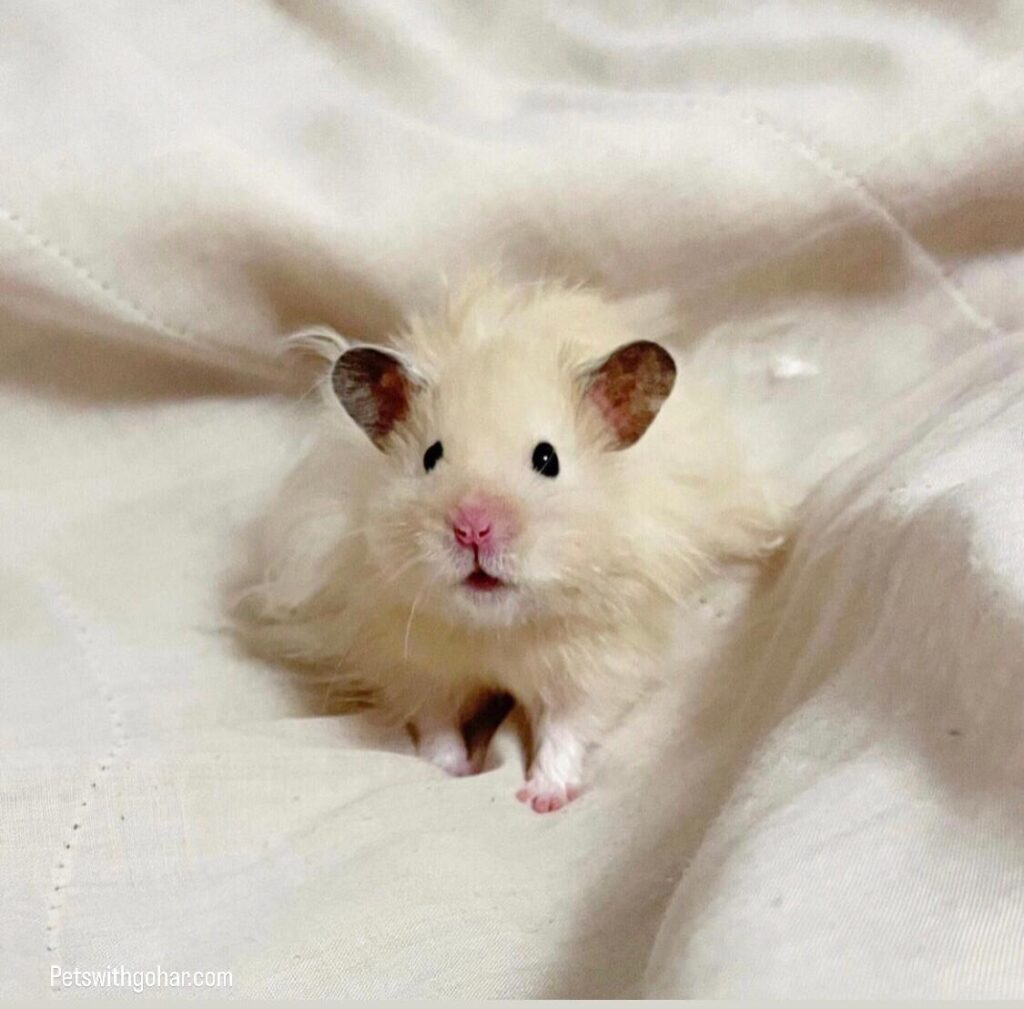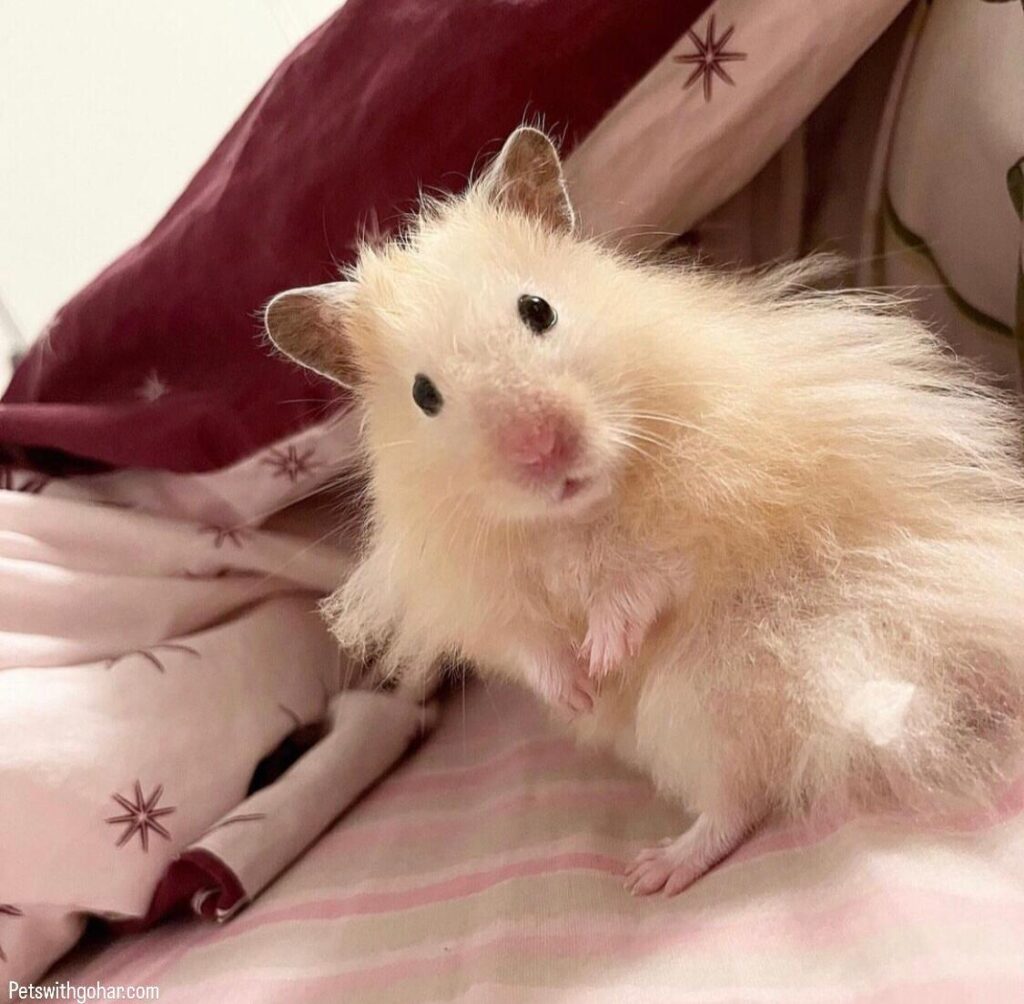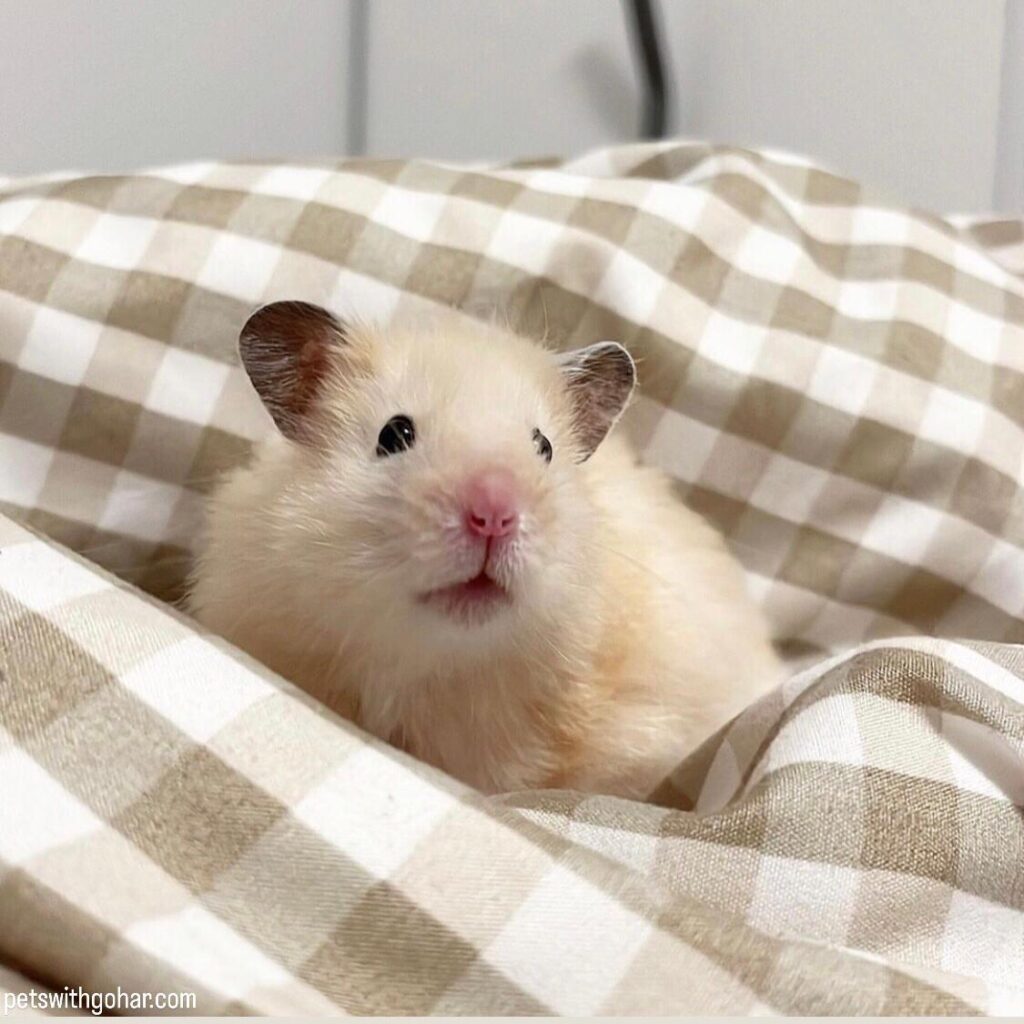Because of their dichromatic eyesight, hamsters have a limited capacity to see colors. Because of this, they can only see in two colors, but humans can see in three since they have three different kinds of cone cells. So, the visual experience is less colorful since hamsters have a much smaller color pallet.

While not completely grayscale, hamster vision is essentially monochrome. Although they have limited color vision compared to humans, they can nonetheless sense a limited range of colors. When it comes to their native environments, where fine color differences might not be life-or-death, their monochromatic eyesight works just well.
A Better Understanding of Color Vision in Hamsters
Like many other creatures, hamsters see color in the environment in their special manner. To comprehend how their color vision functions, let’s explore the scientific rationale behind it.
Retina Rods and Cones
Specialized cells known as rods and cones make up the hamster’s retina. Light detection and visual information transmission to the brain are the responsibilities of these cells.
Different Kinds of Hamster Cones
According to studies, hamsters’ retinas include two kinds of cones: one that sees light with shorter wavelengths (green and yellow light) and another that sees light with longer wavelengths (blue and violet light).
My Color Vision Is Poor
Although hamsters can sense colors in the blue-green range, they might not have the same level of color discrimination as humans. This is because their retina contains a smaller number of specific cone types and a different arrangement of these cones.
Variables Influencing How We See Color
How well a hamster sees color depends on several things, like as its age, general health, and the quality of the illumination it experiences. Younger hamsters may have a more vivid perception of color than older ones, and dim lighting can make it harder for them to accurately distinguish colors.
Cone Pigments and Their Function
The sensitivity of hamsters to various wavelengths of light is determined by the presence of particular pigments in their eye cones. These pigments are essential for the development of the hamster’s capacity to perceive colors.
Perceiving and Acting on Colors
Although hamsters’ color vision is limited compared to that of humans, their behavior is nonetheless affected by the colors they can sense. Their preferences in food, playthings, and exploration could be influenced by the colors that attract them the most.
Developmental Modifications
Because of their unique environment and behavioral requirements, hamsters have developed color vision. Their keen color vision helps them navigate their environment quickly and make informed decisions.
Its Relationship to Human Color Vision
Understanding the unique visual capabilities of hamsters enhances our respect for these intriguing critters, even though their color vision isn’t as strong or extensive as ours.
Color vision is essential for hamsters’ perception and interaction with their surroundings, even though it’s restricted compared to humans. Their intriguing world can be better understood if we learn the science behind their color vision.
Are hamsters able to see color?
Animal owners are often interested in how their cute fuzzy friends see, especially when it comes to how they see colors. People often wonder about hamsters’ eyesight because of how they play and are naturally curious. Many people who have hamsters as pets wonder if they can see colors.
Figuring Out How Hamsters See
To find the answer, you need to know how hamster eyesight works. People have trichromatic vision, which lets them see a lot of different colors. Hamsters, on the other hand, only see two colors. In their retinas, they only have two types of cone cells that sense color, while humans have three kinds.
Even though hamsters can’t see colors as clearly as people can, they can still tell the difference between some colors. By learning about the different ways hamsters see, pet owners can make sure their animals are healthy and happy by giving them surroundings that are stimulating and meet their specific sensory needs.
What shades of color can hamsters see?
While hamsters can see some colors, their ability to do so is not as strong or wide-ranging as ours.
Can hamsters see in black and white?
Even though hamsters can see in color, they don’t see everything in black and white like people do.
What do hamsters think about the world around them?
Hamsters use their sight, smell, and touch to understand what’s going on around them.

Can hamsters see colors at night?
Lots of people are interested in how well hamsters can see, especially at night or when there isn’t much light. A hamster is a nocturnal animal, which means it is most busy at night. Finding out if hamsters can see colors in the dark is important for understanding how they act and what they can feel.
How well a hamster can see in low light
Because hamsters are active at night, they have evolved to do well in places with little light. They have special features in their eyes that help them see well in dim light. Even though hamsters can’t see as well as people can during the day, they have special parts in their eyes that help them see better at night.
Rod cells and seeing at night
The large number of rod cells in the retina is a key part of hamsters’ night vision. Rod cells are photoreceptor cells that sense motion and light strength, especially when there isn’t much light. Because they have these cells, hamsters can find their way around and find food at night.
Not able to see colors well
Even though hamsters have better night vision, they still can’t see colors very well, even when there isn’t much light. Researchers have found that hamsters have dichromatic vision, which means they use two different kinds of cone cells in their retinas to see colors. As compared to during the day, they can sort of make out some colors, but not as clearly.
Changes Made for Nighttime Life
Because hamsters are active at night, their eyes have changed to be more sensitive to light and movements than to colors. This change helps them find food quickly, stay away from danger, and find their way around their dens at night.
While hamsters have great night vision that lets them see in dim light, they can’t really tell the difference between colors. Most of a hamster’s night vision comes from its rod cells, which help it see light and movements better but not always colors. Knowing how hamsters’ eyes work helps owners make sure their nocturnal pets are well cared for and that their surroundings are right for them.
Which hamster species can see colors?
Though hamsters’ color vision isn’t quite up to par with that of humans, it doesn’t mean they’re colorblind either. On the other hand, not all hamster breeds have the same color vision.
Color Perception in General
Hamsters often possess dichromatic vision, which indicates that their eyes have two distinct types of cones that are sensitive to color. Some hues in the blue-green spectrum can be perceived by them, however not to the same extent as humans.
Distinct Variations Among Breeds
There may be small variations across hamster breeds when it comes to color perception, although no conclusive research has been conducted on the topic. One notable trait of Syrian hamsters, sometimes called golden hamsters, is their superior ability to distinguish between different colors.
Limited Extent of Research
Having said that, there hasn’t been a tonne of study looking at how various hamster breeds perceive color. That is why it is difficult to say with certainty which breeds are colorblind.
Impacts on the Environment
Another thing that can affect a hamster’s color perception is its environment and the kind of illumination it experiences. No matter the breed, their color sense can be even worse in low light.
Although considerable variation exists in the capacity to see color, all hamster breeds may be colorblind. More study is required to completely comprehend how various hamster breeds see colors, however, Syrian hamsters may show marginally superior color discrimination.
Hamsters can see blue-green colors due to dichromatic vision. Their limited color awareness and acute motion and contour detection help them navigate their nocturnal habitat.
Hamster varieties may perceive color differently, but they adapt to their environment. Their visual perceptions depend on sunlight and habitat.
Learning about hamster vision strengthens our respect for these extraordinary animals. Hamsters see the world through their lens, enriching their sensory experiences and highlighting nature’s wonders.
Can Hamsters See Color Conclusion
Hamsters can see blue-green colors due to dichromatic vision. Their limited color awareness and acute motion and contour detection help them navigate their nocturnal habitat. Hamster varieties may perceive color differently, but they adapt to their environment. Their visual perceptions depend on sunlight and habitat.
Learning about hamster vision strengthens our respect for these extraordinary animals. Hamsters see the world through their lens, enriching their sensory experiences and highlighting nature’s wonders.
Can Hamsters See Color FAQs
Q: Are there colors that hamsters really like more than others?
A: Studies show that hamsters may like colors in the blue and green range. However, each hamster may have different tastes. Because of where they live, these colors may appeal to them more.
Q: Does color work to train hamsters?
A: Some hamster owners have had success training their pets with colored things as cues. It hasn’t worked as well as with some other pets, like dogs. But it’s important to remember that hamsters learn and communicate more through their other senses.
Q: How does the way hamsters see colors affect how they act?
A: How hamsters see and interact with their surroundings is affected by the colors they see. They might be more interested in bright colors, which could affect what they choose to eat, play with, and explore.
Q: What makes it harder or easier for hamsters to see colors?
A: How hamsters see colors can be affected by things like their age, health, and the lighting they are in. Their natural environment and how they have changed over time also affect their ability to see colors.

